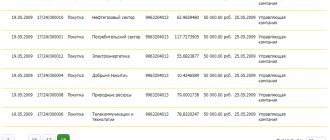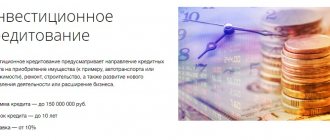Do you need a financial airbag? Subconsciously you understand that yes. Everyone talks, advises and recommends having some kind of safety margin for yourself (in the form of the Nth amount of money). In practice, most people don't have this.
Things were the same for me a few years ago. Then I realized (or rather, life made me understand) the undeniable advantage of such a nest egg for unforeseen circumstances. And from that moment on, no matter what happens, I always have financial reserves for any day.
From the article you will learn the main points about the formation of an airbag.
And my humble experience. A short story about how I started forming my reserve capital. And some nuances of accumulation, storage and use of a pillow.
What is a financial cushion
A financial airbag is the savings of an individual or family that can be used as quickly as possible. But these are not necessarily paper bills. The main thing is that the reserve contains the most liquid assets that can be quickly converted into cash - withdrawn, exchanged, withdrawn, converted, resold.
The peculiarity of a financial cushion is that it cannot be simply spent on everyday expenses or desires. The reserve is formed only for emergency purposes. Such a financial buffer helps to get through difficult periods of lack of money with minimal losses for each family member or individual.
They create a financial reserve from their own profits. Savings are collected by families or individuals who understand the significance of the final goal. Financial cushions are formed not only by households, but also by countries, businesses, and entrepreneurs. Reserves are needed for periods of financial instability, crisis or force majeure.
Having a financial cushion instills peace of mind in difficult periods of life and allows you to focus not on the emergency search for money, but on solving other problems. If one of the family members loses his job, he will not jump at any offer of income just to cover the immediate needs of the family. He will be able to continue searching for the vacancy that better suits his professional skills and abilities. At the same time, there is no fussiness or stress, and the usual way of life of the family is preserved.
Family financial stability
Since you are reading this article, you are probably interested in financial stability and the well-being of loved ones. The cash reserve we discussed above is only one of three elements that solves this problem.
There are three elements in total:
- cash reserve;
- life and health insurance;
- an effective investment plan for creating capital.
And if one of these elements is missing, the family will find itself in a precarious financial position, risking facing problems at any moment. You can offer an allegory with a stool: it stands steadily on three legs - but will immediately collapse if you saw off at least one of them.
In this regard, read the article on the financial stool - it will help ensure that you provide complete financial stability for your loved ones.
How is it different from investing?
A financial cushion, in fact, is created not to increase money, but to solve temporary financial difficulties. For example, in case of dismissal, illness, sudden life circumstances of a personal or general nature - natural disaster, quarantine, emergency.
The main goal of investment is to increase savings or create a source of passive income. Stocks, bonds, investment accounts, and other financial instruments are suitable for this. Each investor chooses for himself where and in what volume to direct the accumulated money, as well as the investment period and the degree of risk.
Not everyone can mix a financial cushion and investments. But part of the money set aside in the reserve can still be invested under certain conditions, which we will discuss in more detail in this review.
Summary
Keeping credit cards in reserve so that if something happens, you can withdraw the required amount from them - a big mistake, which is increasingly encouraged by advertising. An airbag is needed precisely so that in a difficult situation you do not take out any loans, because they are incredibly expensive.
Creating a financial safety net is always beneficial: in addition to generating interest income, it also gives you confidence in your abilities and, most importantly, the understanding that your finances are under your complete control!
Start building your emergency fund today. Time will pass, and you will remember this as one of your most important decisions in life.
Why financial reserves should not be stored in securities
It is undesirable to place all funds from the financial cushion into investment instruments for three reasons:
- If money is invested in securities or other financial assets for a certain period, it may be very difficult to withdraw it on demand. In addition, high-risk instruments can not only rise in price, but also fall in price, and this is a very bad strategy for a financial cushion. That is, at the end of the investment the investor will have less money than he had at the beginning.
- If you urgently sell securities such as stocks or stock ETFs, they may cost less than at the time of purchase, and there will be no time to wait for the price to rise. In this case, the reserve will go to a loss. At the same time, the value of bonds falls less, so part of the cushion can still be directed, for example, to OFZs.
- A separate argument is that exchanges do not work on weekends or at night, so you won’t be able to get money very quickly. Plus, transactions with securities take place with a delay of 2-3 days, which must also be taken into account when withdrawing funds.
But all these disadvantages are relative. If you draw up a strategy correctly, then part of the family reserve can be placed without compromising the amount of savings.
What to do if you use a pillow
Circumstances arose that forced you to reach into your savings and spend them. In whole or in part. Then the situation in your life stabilized. So what's now?
Restore the pillow. This is your most important financial task. You don't know when you'll need a pillow next time. You should try with all your might to replenish that “emergency reserve” that you did “touch”, and then invest or simply “live” and spend money.
In what form should it be stored?
There are several ways to store a financial reserve:
- cash;
- on a debit card;
- on a bank deposit.
Cash
The most obvious advantage of cash is free access to such savings. But there are many more disadvantages:
- inflation, which gradually depreciates savings;
- the risk of spending money for other purposes;
- loss or theft.
If you keep your savings in a bank safe deposit box, you will have to pay for it. In addition, not all banks provide 24/7 access to safe deposit boxes. Therefore, when storing cash for emergencies, you should consider a home safe.
On a debit card
You can withdraw money from a bank card even at night, the main thing is to find an ATM of your servicing bank or partner. To reduce the impact of inflation, it is better to choose a card with interest on the account balance. The main disadvantages of storing a financial cushion on a debit card:
- you will most likely have to pay for issuing the card and its maintenance;
- Internet banking, SMS alerts and other services may also be paid, but most additional services can be refused and thus reduce costs;
- The bank can change the interest rate at any time.
An additional precaution is not to use a card with a large balance for purchases and payments, so as not to compromise access to the money in the account and not to lose the plastic card.
Please note that most banks offer the best savings offers if the minimum transaction limit is met. For example, settlements were carried out for 10-50 thousand rubles per month. But not all clients are able to comply with such requirements. Therefore, review the bank conditions in advance for similar offers with interest accrued on the balance.
When storing a financial cushion on a debit card, you should track the amount of savings. Funds up to 1.4 million rubles in one bank are legally protected; anything above this amount can be lost in the event of bankruptcy of a credit institution.
On a bank deposit
When choosing a bank deposit program, you need to select deposits that allow partial early withdrawal with minimal losses of accumulated interest. The main advantages of keeping a family reserve on a bank deposit:
- interest on the deposit reduces the impact of inflation;
- the money will not be stolen and it will not be lost;
- The interest rate remains unchanged for the entire term of the deposit.
Of the minuses:
- it is difficult to calculate how much money may be needed urgently; if you have to withdraw the entire deposit, the accumulated interest will be minimal;
- Branch opening hours may be inconvenient; not all banks allow deposits to be processed remotely or on weekends, which reduces the mobility of deposits.
The limit on the amount, as for debit cards, is a maximum of 1.4 million rubles in one bank. It is better to keep savings above this limit in another bank or another asset. The financial cushion can be divided into several areas or used only one.
Criteria for creating a reserve and principles for its use
The very first thing you need to understand is that an airbag is not an investment whose purpose is to increase capital. The financial reserve has a different task - saving money and providing quick access to it if necessary.
Criteria for creating a reserve fund:
- The primary right to create. Unfortunately, this criterion is not met by many people. People start a new business, take out long-term loans, start investing and invest all the money in these projects. And if something goes wrong, financial difficulties arise. And the first thing you need to start with is to create at least a small reserve “for a rainy day.”
- Liquidity, i.e. the ability to quickly receive the required amount. Investments in real estate, precious metals, antiques and other low-liquid instruments are not suitable for this. When the roof of your home is blown off by a hurricane or your flooded neighbors are demanding money for repairs, you are unlikely to wait for an asset sale to resolve the problems.
- Optimal size. There is no universal figure for how much reserve capital should be. It is different for every person or family. But you should proceed from the amount of monthly expenses and the period within which it is realistic to solve the problems that arise (3, 6, 12 or 24 months).
- Diversification. If the size of the cushion being created is large, then it is better to distribute the money over several instruments. For example, store in several currencies, use a deposit and a brokerage account. This way you can earn something from storage.
When the reserve is created, great things can be done. You yourself will feel how much freer you have become in your actions and desires. But there are several more important principles that must be followed when using a financial cushion:
- Immunity. Rainy day money should be used on such a day. It is unlikely that purchasing the newly released iPhone model can be considered a vital goal. And the whole family also plans a vacation trip in advance, rather than spending the reserve. It exists to solve problems that could not be foreseen and on which life or health depends.
- Replenishability. If the unexpected happens and the money is spent, be sure to replenish the reserve to the originally calculated amount.
For some people I will add another principle - discipline. The financial reserve is kept in places where it must be easy to access (to meet the first criterion - liquidity). Not everyone can resist spending money on current needs: the TV is broken, we are celebrating a birthday and simply “Can’t I afford to relax a little?” Of course you can. Only then will MFOs and banks relax at your expense.
02.03.2020
11 207
The best books on financial literacy - learning to manage your money
A selection of books on finance, financial thinking and money management.
In what currency should I store it?
If the financial cushion is already impressive, then it is advisable to store part of the amount in different currencies. Sometimes for this purpose they use a package of freely convertible most common currencies - American dollars, euros. And sometimes they add the most stable currencies in the world - Swiss francs, Japanese yen, Norwegian and Swedish kroner.
At the initial stage, it may not be practical to convert Russian rubles to other currencies. Significant sums can be spent on conversion, especially if you buy foreign currency at a time that is not the most favorable for the Russian ruble.
The most common distribution for Russians:
| Russian rubles | Dollars | Euro |
| 30% | 40% | 30% |
| 33% | 34% | 33% |
| 20% | 50% | 30% |
You can choose any of the proposed options or develop your own proportion. You can also add any other currency that inspires more confidence than euros, rubles or dollars. But you shouldn’t keep your financial cushion in some exotic currencies. Remember: the main task of a reserve is its ability to quickly turn into cash that will go to the needs of the family.
How to determine the size of the financial reserve
The size of the financial cushion depends on whether there are children in the family, as well as other dependents or not. The more family members and dependents, the longer the reserve is needed:
- For single people or families without children, the supply is formed for 4-6 months.
- For families with children or dependents - for a period of 8 to 12 months.
Mandatory expenses include utilities, rent, loans, purchases of food, household items, seasonal clothing, shoes, as well as other expenses that cannot be avoided. To calculate the amount of monthly expenses, it is advisable to conduct a preliminary analysis and see how much is enough to provide for all family members, and add 10-20% to it.
For example, the income of a family with children is 200 thousand rubles per month, and expenses are 120 thousand. This means that for 12 months a financial reserve in the amount of 1.440 million rubles will be needed. Taking into account the additional reserve, the amount of 1.5 million rubles is enough to provide for a family for a year. But only if costs do not change significantly.
Recommendations on the size of the financial cushion are conditional. Some families prefer to reserve amounts for 2-5 years of residence, so as not to worry if a protracted crisis or unforeseen circumstances occurs.
How to start saving?
The first thing you need to do is calculate the amount you need. We take a piece of paper and scrupulously and carefully describe where the money we earn goes. Next, we subtract expenses from the amount of income and look as a percentage at how much we can afford to save monthly.
Let's look at the numbers how to calculate the financial cushion, for example: Monthly income: 15,000 rubles. The amount of expenses is 12,370 rubles. Family financial safety net (for 6 months): 12370*6=74220 rubles. Monthly payment: 15,000 - 12370 = 2630 (17.5%). Term of formation of the FPB: 28 months (approximately 2.5 years).
That is, we see that a fairly long period is required. Therefore, in our case, it is necessary to take the following steps: find out where we can save in order to reduce the period of formation of the FPB. What can you save on?
- Put off large expenses that are not immediately necessary.
- Reduce your monthly grocery allowance.
- Eliminate the costs of unnecessary wardrobe items, cosmetics, household chemicals (buy one shirt instead of two, take 2 kg of powder for a month, and not 2 packages of 4 kg each, because it’s on sale). We remember that promotions and discounts are designed to make us buy, and the formation of the FPB is a temporary but necessary phenomenon.
- Find an additional source of income that can be used entirely to form a reserve. For example, you can make money on the Internet, and in my previous materials I have repeatedly told you how to do this.
- Reduce spending on entertainment.
Let's assume that we have completed all the above points, which allowed us to reduce costs by 2,680 rubles. Then it turns out that we will be able to save 35% monthly, and the planned amount of the airbag will be achieved in a year and two months. After reaching this threshold, you can start spending money as usual, although, in my experience, such forced savings are very good for discipline in handling finances and instilling skills such as planning.
Do not put off the formation of the FPB “for later”, do not wait for tomorrow: the temporary savings regime is a necessary measure for your benefit.
What determines the storage method?
Recommendations for storing the financial cushion and its distribution depend on the size of the emergency reserve. The larger it is, the more options for maneuver. At the initial stage of accumulation, the strategy should be as simple and understandable as possible.
Strategy for a small stock
If the reserve is small or the family is at the very beginning of accumulating a financial cushion, it is most convenient to store the reserve in cash or on a savings card. Some people are better suited to saving money through savings accounts. In this case, you can arrange deposits using a “ladder” scheme - open several accounts for different periods of 3-6-9 months.
For example, 150 thousand rubles have been collected, divide them into three deposits of 50 thousand each. After three months, when the first deposit expires, report it to the 9-month deposit or make another deposit for the 12th month. That is, every 3 months access to one of the amounts is opened. This strategy helps minimize inflation and maintains access to a certain portion of money.
If a depositor urgently needs a certain part of the reserve, then funds can be withdrawn not from all deposits at the same time, but only from the one with the closest completion period. In this case, you should check with the bank in advance whether it is possible to terminate the deposit online. It is also advisable to apply for a deposit card at the same bank. Then the most convenient and quick access to money is maintained. For example, if you can close a deposit via online banking, then you can withdraw money and withdraw it from your account at an ATM even on weekends or at night.
This strategy solves three problems simultaneously:
- money is not stored directly on the card, which protects it from theft and withdrawal if the card is lost or the PIN code is compromised;
- the deposit has an interest rate that at least slightly compensates for the depreciation of money under the influence of inflation;
- the threat of losing accumulated interest insures the money in the deposit against a momentary desire to take and spend the amount for other purposes.
When the first stage of accumulation has been completed and the financial cushion has become larger, you can move on to another strategy or continue using this one. Each person decides for himself which path to follow.
Strategy for a large reserve
When the formed reserve of the family budget has reached the minimum required reserve, then the entire amount in excess of the calculated limit can be directed to investment. But you can only invest in risk-free assets. That is, for the family from the example described above, for which 1.5 million rubles is enough for a year, anything more than this amount can be invested in short- or medium-term financial instruments.
Find out where to invest money to receive monthly income from this article by Brobank. In another review, explore the 5 best ways to grow your savings.
Those who decide to invest separately from their financial cushion will only need to track the safety of the deferred reserve. Anything larger than the emergency reserve should work and bring the highest possible profit, while risk-free instruments have minimal profitability. Therefore, it is not necessary to store all the family’s free money in a financial cushion.
Where to store money?
By forming a financial reserve for the future, a larger and larger amount of funds will gradually accumulate.
And a logical question arises - where to store all this money?
At home? Or maybe invest it somewhere? For money to work and generate income.
Before you answer, you need to understand why we are saving money. For what purpose?
For important, including sudden, unforeseen expenses.
Therefore, the main rule is liquidity. That is, the opportunity to quickly withdraw money if necessary.
The second important point is that it must be a reliable source of investment.
Bank deposits are ideal for these parameters. Money can be withdrawn at any time. The bank accrues income, albeit small. Which at least protects money from depreciation. And the deposits are insured by the DIA - 1.4 million are guaranteed by the state.
You can keep a small portion of your funds at home. Just in case. Banks may not be open on weekends or holidays, but you need money here and now.
When to start collecting and how much to save
Forming a reserve cushion for the family budget is the first stage of financial planning. Therefore, you can start saving as soon as the thought of it arises or income appears.
Financially literate parents try to develop the skill of smart saving in their children, but those who do not have such a habit will need to develop it. Read about how to start saving and saving money in a separate material from Brobank.
Even with a small but regular salary, you can look for ways to optimize expenses. You can start saving with 10% of your income. Most families do not notice a significant difference between living on 100% or 90% of income, provided that all expenses are optimized. But this way is not very effective. To accumulate a reserve of 1 month, you will have to save 10 months; to form a cushion for one year, it will take 10 years. Therefore, if 10% per month seems not enough, then all additional income can be sent to the reserve:
- bonuses;
- bonuses;
- 13th salary;
- income from part-time work;
- rental of housing, car or other property;
- any other income not related to wages.
But for those who find it difficult to allocate even 10% of their salary, you can start with 5%. Gradually, you will develop the habit of “seeing” the holes where money goes ineffectively.
You shouldn’t wait for Monday, next month, the new year or a salary increase - it’s smarter to start right away. If income from the employer comes to the card, you can set up an automatic debit of the amount, which will go to a special account as soon as the salary is credited.
When and how to create your own liquid fund
Creating a personal reserve is the first step in personal financial planning. If you don’t yet have a financial cushion, start creating it immediately. Because its absence can lead to very serious losses for the family.
Like all savings, an emergency fund is created by regularly saving part of your current income. How much money should I save for this? For most families, saving 10% of current income will not pose any financial strain. Because you can live just as comfortably on 90% of your income as on 100%.
Therefore, make it a rule to regularly save 10% of your income and allocate these funds to your emergency fund. And it will begin to grow.
Yes, it won't be very fast. However, growth can be accelerated by directing occasional income into the stash - bonuses or bonuses. Perhaps you are planning to sell something in the future. Place the proceeds in an emergency fund. This way, over time, you will create the necessary amount.
And this will benefit you greatly. In difficult circumstances, you will not worry about money - but will concentrate all your efforts on solving the problem that has arisen. And your loved ones will be safe in difficult times.
What can you use it for?
The financial cushion is used in two global directions:
- Emergency need for money. This is the first and main purpose for which a cash reserve is formed. Layoff at work, burst pipes, fire, accident, illness and many other situations can lead to the spending of cash reserves. If you have your own business, family and children, then there will be even more such situations; it is impossible to foresee each one, but you can and should insure yourself with a reserve.
- Sudden investment opportunities . The most profitable offers for investors open up during sharp or protracted crises. Not all owners of a financial cushion will be able to competently assess the risks and prospects of an investment. But if you already have some investment experience, then at this time you can buy assets at the most attractive prices.
The second option is not suitable for everyone. You can only allocate a certain share of the total savings to it, so as not to be left with nothing.
If force majeure occurred and the family had to climb into the financial cushion, then after the situation has stabilized it should be systematically replenished. The main thing to understand is that an emergency is not a vacation, not a new car or a fur coat on sale, but those circumstances that significantly affect the family’s ability to earn money.
In some cases, when there are current debts - for example, a loan or mortgage, families believe that it is better to pay them off quickly than to save for a rainy day, but this is not entirely true. Yes, from an economic point of view, it is more profitable to close loans as quickly as possible, because the interest on debt servicing is higher than the income from risk-free savings. But the purpose of a family’s cash reserve is not short-term profit, but global financial security in times of emergency.
If the borrower is laid off from work without the accumulated reserve, he may become bankrupt. And with a cash reserve, he will be able to fulfill his obligations to the bank for a certain period and at the same time look for a job in his field.
about the author
Klavdiya Treskova - higher education with qualification “Economist”, with specializations “Economics and Management” and “Computer Technologies” at PSU. She worked in a bank in positions from operator to acting. Head of the Department for servicing private and corporate clients. Every year she successfully passed certifications, education and training in banking services. Total work experience in the bank is more than 15 years. [email protected]
Is this article useful? Not really
Help us find out how much this article helped you. If something is missing or the information is not accurate, please report it below in the comments or write to us by email
Cash safety margin - basic rules
Let me list the three most important rules for handling your emergency fund.
8.1 If you don’t have an airbag, be sure to create one
As an independent financial advisor, I advise many people on investing and managing their personal finances wisely. And often people with fairly high incomes come to me for consultation - who have absolutely no liquid funds.
I explain to them that this is a major personal finance mistake that can lead to serious losses at any time. And I recommend correcting this error immediately.
Therefore, if suddenly you do not yet have your own airbag, be sure to start creating one as soon as possible. You will feel much more confident if you have a liquid fund. In a difficult situation, you can use these tools to solve the problems that arise.
8.2 Don't waste your financial reserve
Your liquid fund is funds intended for emergency, exceptional, force majeure situations. Remember that this is not the money that can be used to pay for another vacation or a new fur coat.
Use this reserve only in case of emergency events. For all other cases, just assume that you don’t have this money.
8.3 Replenish the reserve if it has been used
If difficult times have really come and you have used funds from your reserve, be sure to replenish it. You already know how to do this. Just systematically save part of your income until the reserve reaches its previous size.
When this task is solved, you are fully ready to respond to those unexpected events that life sometimes presents to us.
Comments: 0
Your comment (question) If you have questions about this article, you can tell us. Our team consists of only experienced experts and specialists with specialized education. We will try to help you in this topic:
Author of the article: Klavdiya Treskova
Consultant, author Popovich Anna
Financial author Olga Pikhotskaya
Why is FPB needed?
People need a cash reserve in two cases.
2.1 Sudden need for money
Imagine a situation where a person loses his job. He immediately loses his income - but he needs to eat, pay bills and provide for his family. What happens if there is no reserve fund?
You need to get a new job as quickly as possible. This urgency will likely result in the person finding a boring job with a low salary. And as a result, you will seriously reduce your income for many years. And with it - the life prospects of his family.
And with an emergency fund, he could easily afford to look for work for several months. To ultimately find a promising position with a good salary. Working with pleasure, he would achieve good results, grow in his career, and increase his income. Which would ultimately lead the family to financial well-being.
Of course, the need for liquid funds does not end with just a sudden layoff. There are many everyday situations when money is needed urgently. A major breakdown of a car, a flooded neighbor due to our fault, or a long-term illness - all these events require money to pay for urgent expenses. And they should be so that the family does not get into a difficult financial situation.
It’s worth mentioning separately about people who run their own business. Having a liquid fund is even more important for them. Because wage earners have predictable incomes, but in business they don’t. And a businessman must be prepared for financial troubles at any time.
Therefore, having an airbag is very important. However, there is another category of reasons, more pleasant - which also requires the presence of a reserve fund.
2.2 Sudden investment opportunities
If you have liquid funds, you can take advantage of investment opportunities that come your way. This is especially important for those moments when economic crises occur.
It is during these times that you can literally buy wonderful assets for next to nothing - which will skyrocket in value in the near future. But for this acquisition you need money now , this minute. At a time when no one has them.
And for this reason, you also need an emergency fund. Thus, the airbag protects the family in adverse conditions, and at the same time allows you to make profitable purchases when interesting opportunities open up.
Download the PDF review “Personal Financial Planning” to invest wisely and create personal capital:











